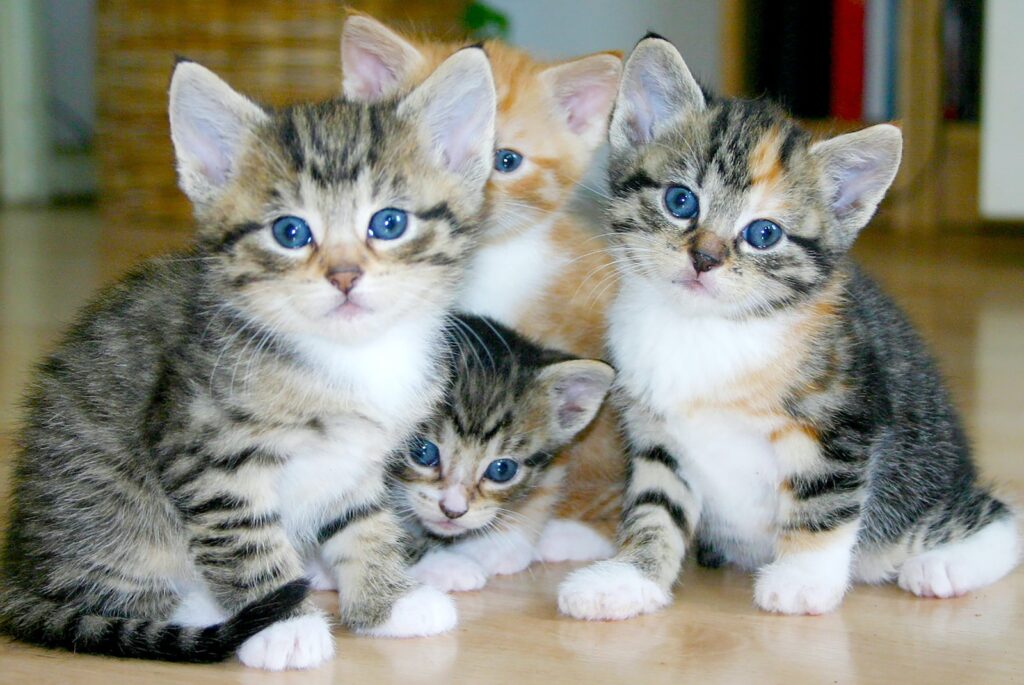Can Cats Eat Catnip? — Yes, They can
Catnip, known scientifically as Nepeta cataria, is a herb that is well-loved by many cats. When cats are exposed to catnip, they often exhibit behaviors such as rolling, rubbing, and purring, which can be quite entertaining to witness. But can cats actually eat catnip? The answer is yes, cats can safely consume catnip without any harm to their health.
Can Kittens Eat Catnip?
Yes, kittens can also enjoy catnip without any negative effects. However, it’s important to note that not all kittens may respond to catnip until they reach maturity, which is typically around 6 months of age. Therefore, if your kitten doesn’t seem interested in catnip, don’t worry, as their sensitivity to it may develop with time.
Things to consider when feeding catnip to kittens?
While catnip is generally safe for kittens, it’s essential to offer it to them in moderation. Start by introducing small amounts of dried catnip or catnip-infused toys to gauge their response. Always supervise your kitten during playtime with catnip to prevent accidental ingestion of large quantities, which may lead to temporary digestive upset.
Nutritional Benefits of Catnip for Cats — Why Catnip is Good for Cats?
1. Mental Stimulation and Stress Relief
Catnip is known to have a calming effect on cats. When they consume or interact with catnip, it triggers a response in their brains that stimulates pleasure and relaxation. This can be particularly beneficial for anxious or stressed cats, providing them with a natural way to unwind and alleviate tension.
2. Environmental Enrichment and Exercise
Catnip can serve as a fantastic tool for providing environmental enrichment and promoting physical activity in cats. By offering catnip-infused toys or incorporating catnip into their playtime routine, you can encourage your cat to engage in active play, helping them maintain a healthy weight and preventing boredom-related behavior issues.
3. Bonding and Social Interaction
Sharing playful moments with your cat can strengthen your bond. Catnip can be a valuable aid in fostering that bond as it can pique your cat’s interest and create enjoyable shared experiences. By incorporating catnip into interactive playtime, you can enhance your cat’s overall happiness and deepen your relationship.
4. Natural Teeth Maintenance
Chewing on catnip leaves or catnip-infused toys can help cats naturally clean their teeth by reducing plaque buildup. This can contribute to better oral health and may minimize the risk of dental issues such as gum disease or tooth decay.
5. Mental Stimulation and Cognitive Development
When cats engage with catnip, it activates their natural hunting instincts, encouraging them to explore and investigate. This mental stimulation can help keep their minds sharp and promote cognitive development, especially in indoor cats who may not have as many opportunities for mental enrichment.
Potential Allergies: Can Cats Be Allergic to Catnip?
While allergies to catnip are rare, some cats may exhibit hypersensitivity or allergic reactions. If your cat shows symptoms such as excessive drooling, vomiting, or skin irritations after coming into contact with catnip, it’s advisable to discontinue its use and consult a veterinarian for guidance.
Symptoms of Catnip Allergies in Cats
- Excessive Sneezing or Nasal Discharge: If your cat starts sneezing excessively or has a runny nose after exposure to catnip, it could be a sign of an allergy.
- Itchy Skin or Irritated Eyes: Some cats may develop skin rash or redness around the eyes when allergic to catnip.
- Gastrointestinal Upset: Vomiting or diarrhea may occur in cats with severe catnip allergies.
What to Do If Your Cat Shows Symptoms?
- Discontinue Use of Catnip: If your cat exhibits allergy symptoms, stop offering catnip and observe if the symptoms subside.
- Consult a Veterinarian: If the symptoms persist or worsen, seek professional advice from a veterinarian to determine the underlying cause and receive appropriate treatment.
- Explore Alternative Enrichment Options: If your cat is allergic to catnip, there are plenty of other ways to provide enriching experiences, such as interactive toys or puzzle feeders. Experiment with different options to find what stimulates and engages your cat.
Recommended Amount: How Much Catnip Can a Cat Consume?
When it comes to feeding catnip to your cat, moderation is key. For dried catnip, a pinch or a small sprinkle on a toy or scratcher is usually sufficient. If you’re using fresh catnip leaves, a small leaf or a few crushed leaves can provide the desired effect. It’s important not to overdo the quantity, as excessive exposure might diminish your cat’s response over time.
Things to Consider When Feeding Catnip to Cats
While catnip is generally safe for cats, it’s important to be aware of a few considerations:
- Not All Cats Respond to Catnip: While most cats are genetically predisposed to respond to catnip, approximately 20–30% of cats do not exhibit any reaction. This is perfectly normal, and it does not indicate any health issue or lack of enjoyment on their part.
- Vary Catnip Experiences: To prevent habituation, consider offering catnip as an occasional treat or during playtime rather than on a daily basis. This can help ensure that your cat continues to find catnip enjoyable and stimulating.
- Monitor for Overstimulation: Some cats may become overstimulated by catnip, leading to aggressive behavior or excessive energy. If this occurs, it’s best to remove the catnip and allow your cat to calm down naturally.
How to Feed Catnip to Cats: A Quick Guide
Introducing catnip to your cat can be a simple and delightful process. Here’s a quick guide to help you:
Catnip Toy Playtime
1. Purchase catnip-infused toys from reputable pet stores.
2. Offer the toy to your cat and observe their reaction.
3. Allow supervised playtime with the catnip toy for about 10–15 minutes.
4. Store the toy out of reach between play sessions to maintain its potency.
Homemade Catnip Spray
1. Grind dried catnip leaves into a fine powder using a mortar and pestle.
2. Mix the powdered catnip with water to create a sprayable consistency.
3. Fill a clean spray bottle with the catnip mixture.
4. Spray a small amount onto fabric toys or scratching posts.
5. Observe your cat’s response and adjust the amount of spray as needed.
Outdoor Catnip Garden
1. Plant catnip in a secure garden area or in pots on a balcony.
2. Allow your cat supervised access to the garden or balcony.
3. Observe their behavior and let them enjoy the natural stimulation of fresh catnip leaves.
Conclusion
In summary, catnip can be a wonderful addition to your cat’s life, providing mental stimulation, stress relief, exercise, and bonding opportunities. It offers numerous benefits without posing any significant risks to your furry friend’s health. However, it’s essential to use catnip in moderation, considering your cat’s individual response and preferences. By following the recommended guidelines, you can ensure a delightful and enriching experience for your beloved feline companion.






